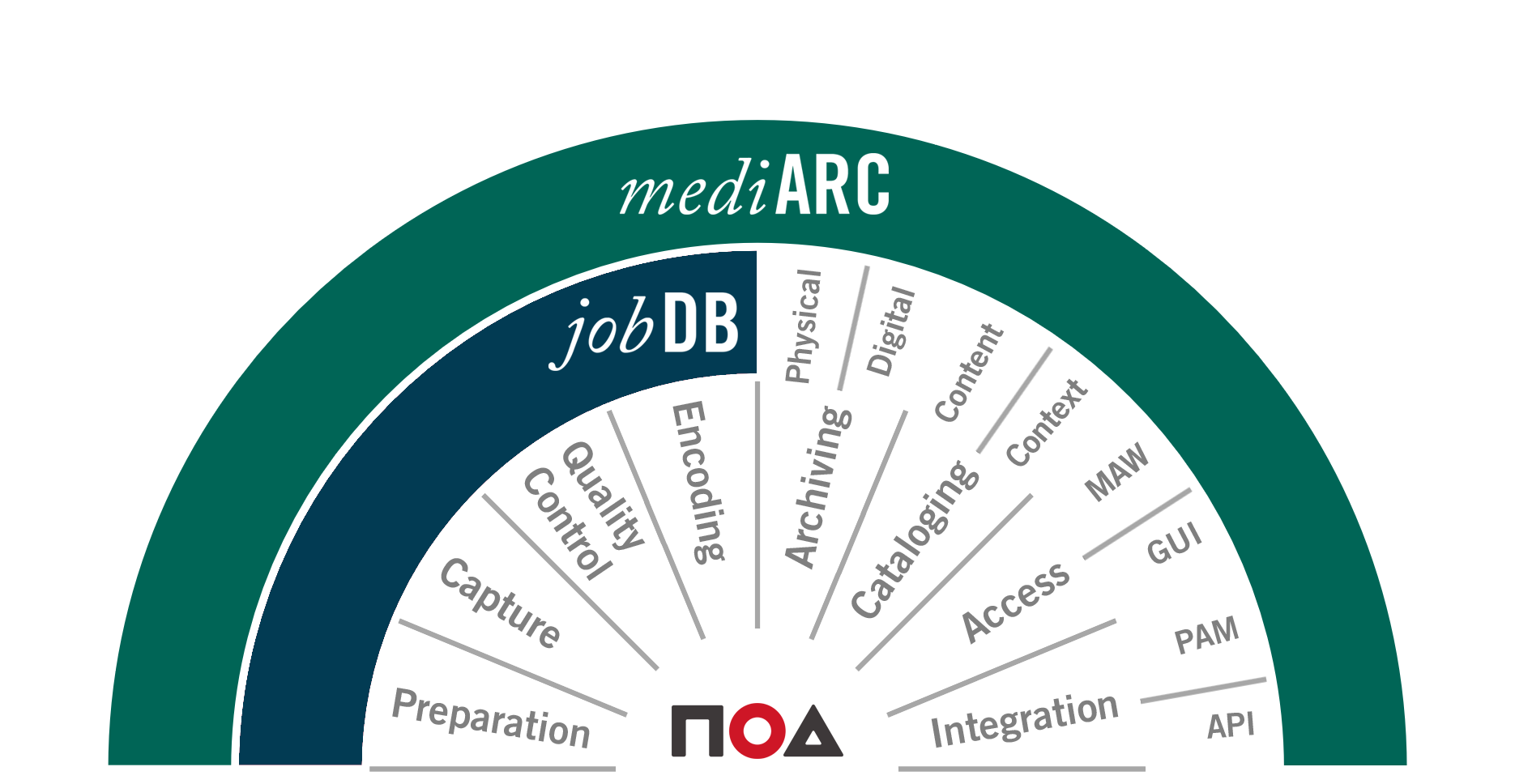mediARC Archive Asset Management
mediARC holds and maintains the database containing and managing all available metadata and operates as a management layer between the main entities of an archive.
Carrier and File Ingest
mediARC systems are not only built to organize the mass digitization of physical audio and video carriers, but also import born digital media and related files.
File Export
Media and metadata retrieval from the archive is facilitated through straightforward order procedures. Media files, along with attached metadata or various file attachments, can be delivered to multiple local or remote storage paths as needed.
Native Clients
The main interface for archive users and admins is mediARC GUI. It enables full asset management, workflow management, research and ordering. mediARC WEB is the limited intranet web version of the mediARC GUI.
mediARC API and Interfaces
An optional API enables connection of your interfaces and messages, allowing control of specific high-level functions in mediARC from another workflow or asset management system.
Backup and Multi-Site
mediARC is designed with business continuity in mind, featuring failover database connections, regular backups, redundant middleware servers, and horizontal scaling for seamless operation even in adverse conditions.
Processors and Automation
A vast range of transcoders, analysis tools, simple interfaces for user decisions, and file importers are available with NOA software. On top of that, any kind of 3rd party tool based upon CMD line or scripting can be connected to the mediARC system.
Archive Storage
Archive storage chosen by the customer is connected using a scalable access agent known as StorageConnector, which facilitates most storage and retrieval requests while isolating direct access from regular users.
Archive Storage
Archive storage chosen by the customer is connected using a scalable access agent known as StorageConnector, which facilitates most storage and retrieval requests while isolating direct access from regular users.
General Public Path
The General Public Path (often referred to as GPP) is a centrally reachable distributed physical storage, to which only processors have read and write access, and which provides inter-task file communication during the execution of a workflow.
